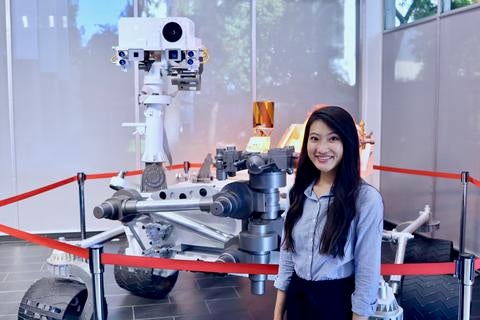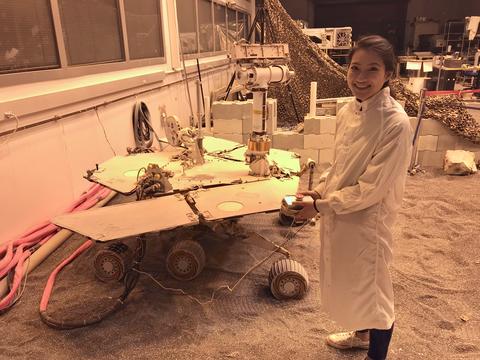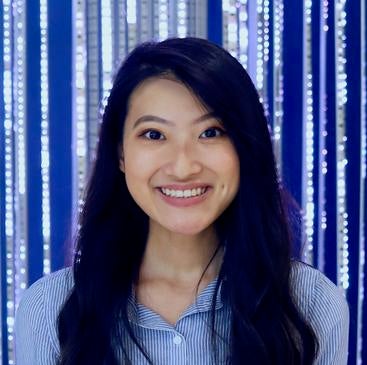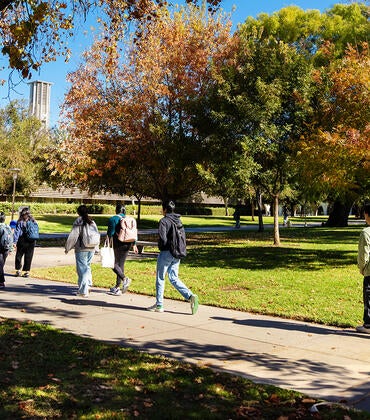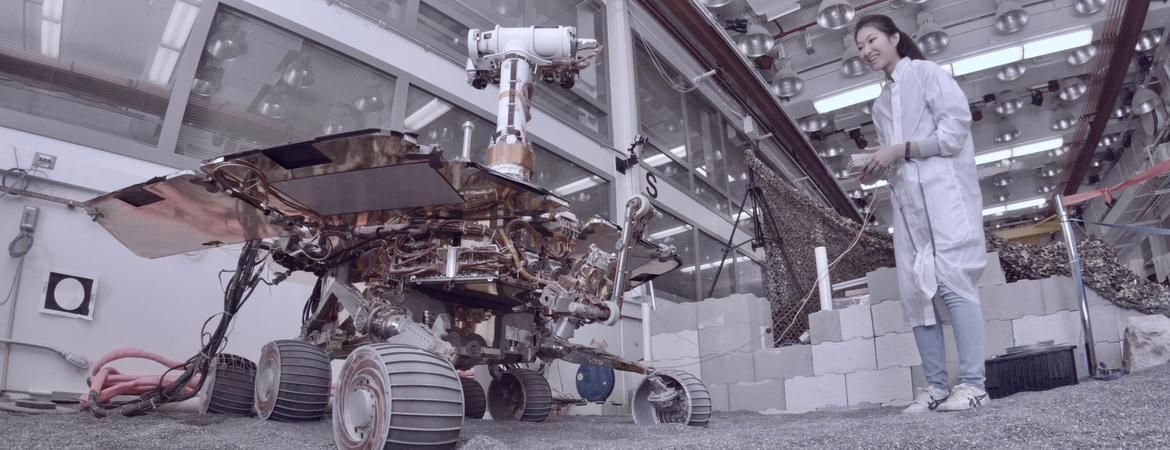
Brittany Seto, a University of California, Riverside, alumna, works with vehicles that are millions of miles away — on Mars.
“I had always imagined myself working in the automotive or space industry when I was an undergraduate,” she said. “I didn’t think I would be working with vehicles on another planet!”
Seto, 25, is one of many UC Riverside students who have previously done summer internships at NASA’s Jet Propulsion Laboratory, or JPL, in Pasadena. This summer, 22 UCR undergraduates were accepted as interns at the lab as a part of the Fellowships and Internships in Extremely Large Data Sets, or FIELDS, program sponsored by a NASA grant to UC Riverside, and are performing research under the guidance of JPL scientists. In addition, six students are interning with scientists at other NASA centers.
“Twenty-two students interning at JPL is a record number for UCR,” said Bahram Mobasher, a professor of physics and observational astronomy who leads the FIELDS program at UCR. “Some of these students are going to work on very visible projects, such as MARS 2020, the WFIRST Mission, finding new planets and looking for signatures of life on other planets, and projects aimed at developing drones to navigate the Martian atmosphere.”
Mobasher attributes the record number of students interning at JPL this year to the success of the FIELDS program and the prospects it has opened up for UCR students. Now in its fourth year, the program involves rigorous research and training in STEM fields and working with large amounts of data.
“The FIELDS program has become better known on campus, with more student wanting to benefit from the opportunities it provides,” he said. “JPL scientists and technical staff have become increasingly interested in hiring our undergraduate students once they see their abilities. In numerous cases, they have extended their internships well into the academic year.”
Indeed, Seto, who interned at JPL in the summers of 2015 and 2016, now works at the lab as a data visualization developer.
“In my last week interning at JPL, my mentor asked me if I would like to continue working with his data visualization group as a full-time employee,” Seto said. “I was thrilled to be able to continue contributing to space exploration.”
In 2015, a year before she graduated from UCR with a bachelor’s degree in computer science, Seto applied and was selected to intern at JPL over the summer. At the lab, she helped the Downlink Tracking Telemetry group that works on all the hardware and software for antenna receivers in the Deep Space Network, the world’s largest and most sensitive scientific telecommunications system. Selected to intern at JPL in summer 2016 as well, she was able to work on the Rover Sequencing and Visualization Program, or RSVP, that operates the rovers on Mars.
Today, Seto continues to work with the RSVP team at JPL. The program is used by Mars rover planners to construct sequences and visualize the rovers’ kinematics during tactical operations. Current missions that use RSVP include the Mars Science Laboratory and InSight Mars Lander. Future missions that will use RSVP include Mars 2020 and the Mars Helicopter. Previous missions that also used RSVP were the twin rovers, Spirit and Opportunity; Seto worked on the operations team for the Mars Exploration Rovers as a mobility and instrument deployment device downlink analyst.
“At work I still use the knowledge I gained during my internships,” Seto said. “During my second internship, I gained a lot of graphics programming experience — for example, OpenGL and Open Inventor — that helped me display Mars terrain images in 3-D.”
Interns who emerge from the FIELDS program are paid $8,300 to work at JPL for eight to 10 weeks. They receive career development advice and are encouraged to build networks within the organization. They have numerous opportunities to get involved, play a role in future NASA missions, and learn state-of-the-art techniques in their field.
“These opportunities can help them with future employment at NASA,” said Xinnan Du, the FIELDS program manager. “Various data science and data visualization techniques they learn can help them secure other well-paying jobs once they graduate. The internships have been life-changing experiences for many of our students by opening their minds to new and unimagined opportunities.”
Seto can attest to that. Her plan is to earn her online master’s degree in computer science from Georgia Tech and specialize in interactive intelligence, or artificial intelligence with a human component. In spite of a tight and demanding schedule, she also manages to volunteer at JPL, giving tours to students in Girls Who Code organizations based in Southern California high schools and colleges.
“As a woman in STEM, I never felt like I was different or incapable of doing my work because of my gender,” she said. “I worked in male-dominated environments throughout my computer science career. I was confident in my potential of accomplishing goals I set for myself and was not intimidated by the so-called ‘glass ceiling.’ I learned that it is important to create a network of individuals who support your ideals and passions. A combination of hard work, passion, and persistence to ‘dare mighty things’ is what brought me to where I am today.”
(Header image of Brittany Seto courtesy of NASA/JPL-Caltech.)
